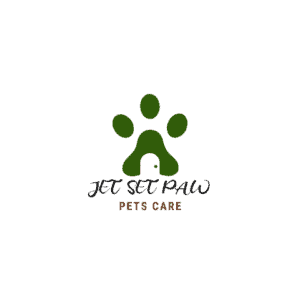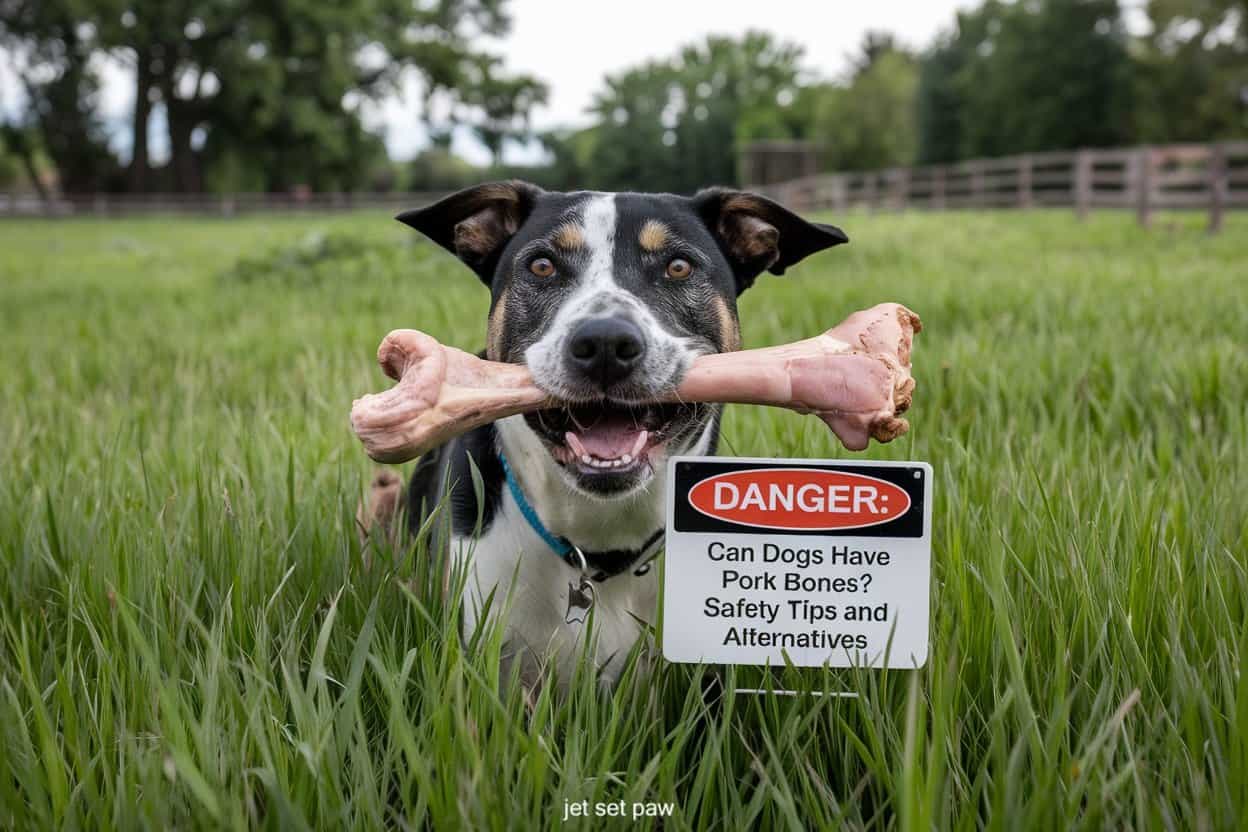Many dog owners love to treat their furry friends with bones. It’s common to see a happy pup gnawing away on what seems like a tasty, natural treat. But did you know that not all bones are safe for dogs? Some can be downright dangerous.
As responsible pet owners, it’s crucial to understand which bones are safe for our canine companions and which ones could put them at risk. This knowledge can help prevent accidents and keep our dogs healthy and happy.
One type of bone that often raises questions is the pork bone. Whether it’s a leftover pork chop bone from dinner or a raw bone from the butcher, many people wonder if giving these to their dogs is okay.
In this blog post, we’ll dive into the vital question: Can dogs safely eat pork bones or pork chop bones? The answer might surprise you and make a big difference in your pet’s safety.
Types of Pork Bones
When considering whether to give pork bones to dogs, it’s essential to understand that there are different types of pork bones. Each type has its own characteristics that can affect their safety.
1) Raw pork bones
These are bones that haven’t been cooked. These come straight from the butcher and are often more rigid and durable than cooked bones. Some people believe raw bones are safer for dogs because they don’t splinter as easily. However, raw bones can carry bacteria that might make your dog sick.
2) Cooked pork bones
These are what’s left after you’ve prepared a pork dish for dinner. These might come from a roast, ribs, or other cuts of pork. Cooking changes the bone’s structure, making it more brittle and likely to splinter. This brittleness is what makes cooked bones particularly dangerous for dogs.
3) Pork chop bones
Pork chop bones are a specific type of pork bone that dog owners often consider giving to their pets. They are usually smaller than other pork bones and have a distinctive flat shape with a curved edge. Pork chop bones can be either raw or cooked, but they present unique risks due to their size and shape, which we’ll discuss later.
Understanding these different types of pork bones is crucial in determining whether any of them are safe for our canine friends. Each type has potential risks that pet owners need to be aware of before giving them to their dogs.
The Dangers of Giving Dogs Pork Bones
While it might seem natural to give dogs bones, pork bones can pose several serious risks to our canine companions. Understanding these dangers is crucial for every dog owner.
Choking hazards
Choking hazards are one of the most immediate and life-threatening risks associated with pork bones. In their excitement, dogs might try to swallow bones whole or in large pieces.
These can quickly become lodged in their throat, blocking their airway and potentially leading to suffocation.
Even if a dog manages to swallow a bone partially, it can still cause severe discomfort and require emergency veterinary intervention.
Broken teeth
Broken teeth are another common problem caused by pork bones, especially cooked ones. As dogs chew on these complex objects, they can crack or chip their teeth.
This causes pain and can lead to infections and expensive dental procedures. Smaller breeds and older dogs with weaker teeth are particularly susceptible to this risk.
Internal injuries
When dogs consume pork bones, they pose a severe threat. As the bones travel through the digestive system, sharp edges or splinters can puncture or tear the esophagus, stomach, or intestines.
These injuries can cause internal bleeding, infections, and, in severe cases, death. The risk is heightened with cooked bones, which are more likely to splinter into sharp fragments.
Digestive problems
Digestive issues are a common aftermath of consuming pork bones. Even if the bones don’t cause immediate choking or internal injuries, they can lead to constipation or intestinal blockages.
Large pieces of bone may not be digestible and can become stuck in the digestive tract, requiring surgical removal. In some cases, bone fragments can also cause rectal bleeding or painful defecation.
Given these serious risks, the potential dangers of feeding pork bones to dogs far outweigh any perceived benefits. As responsible pet owners, it’s crucial to prioritize our dogs’ safety and find safer alternatives for treats and chew toys.
Why Pork Bones Are Especially Risky
While all types of bones can pose risks to dogs, pork bones are hazardous due to several specific characteristics.
Softness when cooked
This is a significant concern with pork bones. Unlike other bones, pork bones become significantly softer when cooked.
This softness might make the bones safer, but it increases the risk. Softer bones are likelier to break into smaller pieces as a dog chews on them.
These small pieces can be easily swallowed, leading to choking or internal injuries. The softness also makes it more tempting for dogs to try to consume the entire bone rather than just gnawing on it.
The tendency to splinter
Another critical issue with pork bones, especially when cooked, is that dogs chew on them, and they can break into sharp, pointed splinters.
These splinters are extremely dangerous as they can cause injuries throughout the digestive tract. They may puncture the esophagus, stomach, or intestines, leading to internal bleeding or infections.
Even if the splinters pass through without causing immediate injury, they can still cause discomfort and potentially lead to constipation or rectal bleeding.
Size and shape concerns
These are particularly relevant when it comes to pork bones. Many pork bones, such as those from ribs or chops, are small enough for dogs to attempt to swallow whole.
This significantly increases the risk of choking. Additionally, the shape of some pork bones, like the curved rib bones, can make them more likely to become lodged in a dog’s throat or digestive tract.
The flat shape of pork chop bones can also be problematic, as dogs might try to swallow them whole, leading to blockages.
These specific characteristics of pork bones make them especially hazardous for dogs. The combination of softness when cooked, tendency to splinter, and problematic sizes and shapes creates a perfect storm of potential dangers.
As a result, many veterinarians and animal health experts strongly advise against giving pork bones to dogs in any form, whether raw or cooked.
The risks outweigh any potential benefits, making it crucial for dog owners to seek safer alternatives for their pets’ chewing needs.
Safe Alternatives to Pork Bones
Given the dangers associated with pork bones, dog owners should be aware of safer alternatives that can satisfy their pets’ natural chewing instincts and provide similar benefits without the risks.
Commercial dog chews offer many safe options for dogs who love to chew. These products are designed with canine safety in mind and come in various textures, sizes, and flavors to suit different preferences. Some popular choices include:
- Rawhide-free chews made from easily digestible materials
- Dental chews that help clean teeth and freshen breath
- Bully sticks, which are high in protein and long-lasting
- Himalayan yak chews, made from hardened yak milk
- Vegetable-based chews, such as sweet potato slices
These commercial options undergo safety testing and are often enriched with vitamins and minerals, providing additional health benefits.
Safe bones for dogs are available as alternatives to risky pork bones.
While it’s important to remember that no bone is entirely risk-free, some options are generally considered safer:
- Raw beef knuckle bones or femurs from large animals (for larger dogs)
- Rubber or nylon bones designed to mimic the texture of real bones
- Edible bone-shaped treats made from digestible materials
When offering any bone, always supervise your dog and remove it when it becomes small enough to swallow whole.
Other chew toys can provide excellent alternatives to bones while still satisfying a dog’s urge to chew. These can include:
- Kong toys, which can be filled with treats for added engagement
- Rope toys, which can help clean teeth and provide mental stimulation
- Puzzle toys that dispense treats, combining chewing with problem-solving
- Durable rubber toys designed for aggressive chewers
- Frozen treats made from dog-safe ingredients like yogurt or peanut butter
When selecting chew toys, consider your dog’s size, age, and chewing habits. Always choose products made from dog-safe materials that are appropriately sized.
By offering these safer alternatives, you can provide your dog with mental stimulation, dental benefits, and chewing enjoyment without the risks associated with pork bones.
Always gradually introduce new chews or toys, and always supervise your dog during playtime to ensure their safety.
What to Do If Your Dog Eats a Pork Bone?
Signs of trouble to watch for
If your dog has eaten a pork bone, watch for these signs of distress:
- Vomiting or attempts to vomit
- Lethargy
- Loss of appetite
- Excessive drooling
- Whining or signs of discomfort
- Constipation or difficulty defecating
- Bloody stools
- Swollen abdomen
- Coughing or gagging
- Difficulty breathing
These symptoms could indicate obstruction, internal pain, or digestive tract problems. Any of these signs, especially difficulty breathing, require immediate veterinary attention.
When to call the vet?
Don’t hesitate to contact your veterinarian if you witness your dog swallowing a large piece of bone. It’s also important to call if you notice any of the troubling signs mentioned above.
Any sudden changes in behavior or appetite should prompt a call to the vet. Remember, being cautious about your pet’s health is always better.
Contact your veterinarian for professional advice if you have concerns or doubts about your dog’s well-being after consuming a pork bone.
First aid steps
While waiting for veterinary guidance, you can take some first-aid steps. Do not attempt to make your dog vomit unless specifically instructed by a veterinarian, as this could cause more harm.
If your dog is choking and you’re trained to do so, perform the Heimlich maneuver for dogs. Offer small amounts of water to help lubricate the digestive tract.
Try to determine how much and what kind of bone was consumed, as this information can be helpful for the vet. Keep your dog calm and comfortable to prevent further stress, and monitor them closely for any changes in condition.
Conclusion
Pork bones pose significant risks to dogs due to their structure and composition. These bones can splinter easily, creating sharp fragments that may damage the dog’s mouth, throat, or internal organs.
The risk of choking or intestinal blockage is high, especially with smaller bones or large pieces. Additionally, the high-fat content in pork bones can lead to pancreatitis in some dogs.
The potential for bacterial contamination, particularly from raw pork bones, further underscores the dangers of allowing dogs to consume these bones.
Selecting safe alternatives to pork bones is crucial for maintaining your dog’s health and well-being. There are numerous dog-friendly chew toys and treats available that can satisfy your pet’s natural urge to chew without putting them at risk.
These alternatives can provide similar benefits, such as dental hygiene and mental stimulation, without the dangers associated with pork bones.
By choosing appropriate substitutes, you can ensure your dog enjoys a safe and fulfilling chewing experience.
Responsible pet ownership involves making informed decisions about your dog’s diet and activities. This includes being aware of hazards like pork bones and preventing access to them.
It’s essential to educate yourself about safe and unsafe dog foods and consult with your veterinarian about appropriate chew toys and treats.
By prioritizing your dog’s safety and health in all aspects of care, including what they chew on, you demonstrate commitment to being a responsible and loving pet owner.

